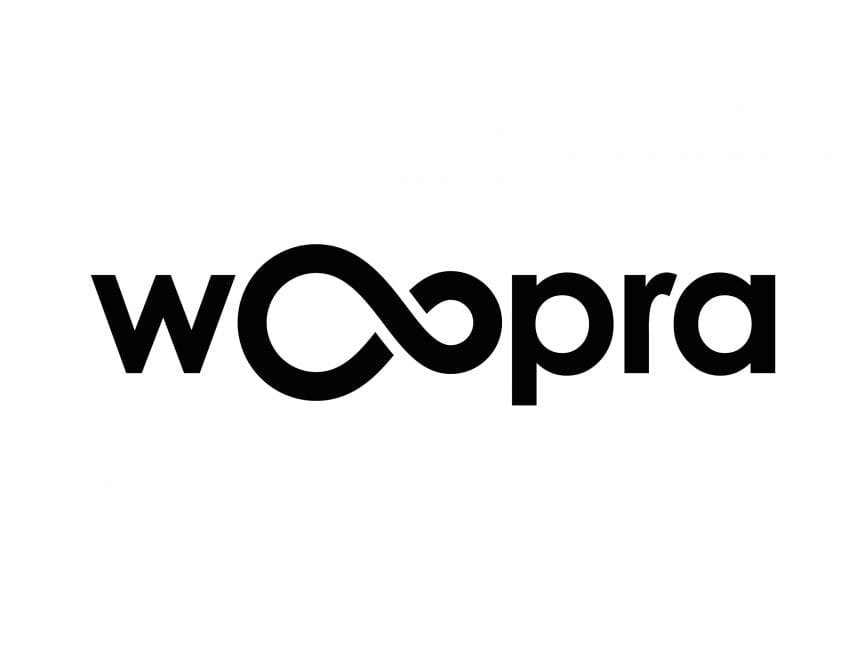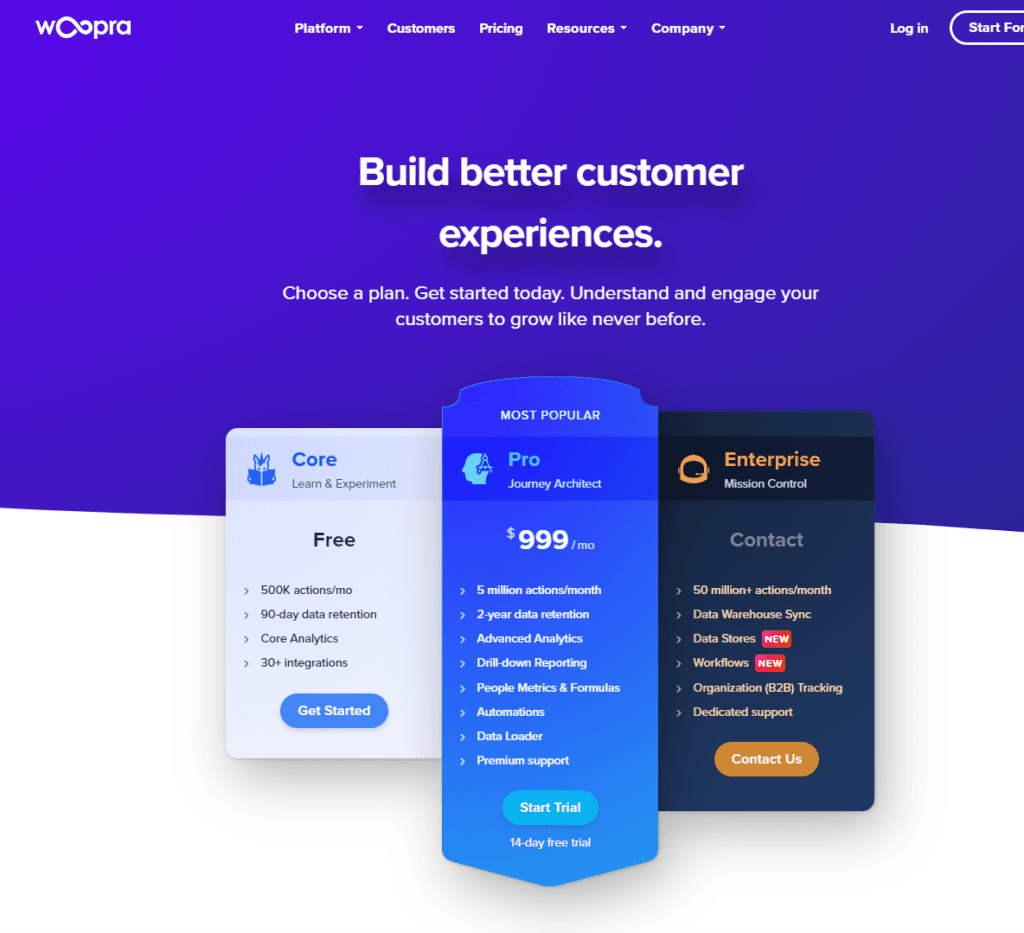In the sprawling digital landscape, the quest for the perfect analytics tool can feel like searching for a mythical creature. It’s a journey fraught with promises of insight and enlightenment, yet the path is often murky. Among the contenders vying for the title of your digital oracle, two names stand out: Woopra and Heap. Both offer a promise to illuminate the dark, data-driven recesses of your business, but which one is the beacon of light you’ve been searching for? Let’s delve into this comparison with a focus on one of the most critical battlegrounds: User Behavior Tracking.
Woopra | Heap |
|---|---|
| G2 Score – 4.4 out of 5 stars | G2 Score – 4.4 out of 5 stars |
| TrustRadius Score – 5.8/10 | TrustRadius Score – 8.2/10 |
User Behavior Tracking: The Heartbeat of Analytics
Understanding user behavior is akin to decoding the language of your website or app. It’s about listening to the whispers of user interaction and translating them into actionable strategies. Both Woopra and Heap excel in this domain, but they approach the conversation differently.
Woopra: Crafting Stories from Data
Woopra approaches user behavior tracking with the finesse of a novelist, crafting stories from the myriad interactions users have with your platform. With a keen eye on the customer journey, Woopra offers a detailed narrative that encompasses everything from page views and clicks to custom events tailored to your unique business needs.
What sets Woopra apart is its dedication to real-time data flow, allowing businesses to see the impact of their actions as they unfold. This immediacy is bolstered by Woopra’s ability to integrate seamlessly with a vast ecosystem of tools, from email marketing to CRM systems, enriching the user stories with external chapters. For businesses seeking to understand not just what their users do but why they do it, Woopra provides the analytical depth to dive into the motivations behind user actions, offering insights that are both broad and deep.
Heap: The Architect of User Interaction
Heap takes a slightly different approach, focusing on the architecture of user interaction. It automatically captures every click, form submission, and page view without requiring manual setup for each event. This comprehensive data collection is Heap’s foundation, allowing businesses to construct detailed analyses of user behavior without prior assumptions about what’s important.
The power of Heap lies in its flexibility and the retrospective analysis it offers. Since Heap captures all interactions from the start, businesses can go back in time to analyze behaviors they didn’t know were significant at the outset. This feature is a game-changer for companies evolving their digital strategy, providing the freedom to explore user behavior in ways they hadn’t initially anticipated.
Integration Capabilities: The Connective Tissue of Your Digital Ecosystem
The digital tools and platforms a business uses form a complex ecosystem. An analytics tool’s ability to integrate seamlessly into this ecosystem, drawing in data from various sources and providing actionable insights, is vital. Let’s compare how Woopra and Heap stack up in their ability to integrate with other software and services.
Woopra: The Seamless Weaver
Woopra prides itself on being more than just an observer of your digital domain; it aims to be an integral part of it. Offering an impressive array of integrations with over 50 popular services including CRMs like Salesforce, marketing automation tools like Marketo, and support platforms like Zendesk, Woopra ensures that no data is an island. These integrations are not merely superficial links; they allow for deep data synchronization, enabling businesses to track customer interactions across multiple touchpoints in real-time.
Moreover, Woopra’s custom event tracking further enriches its integration capabilities. Businesses can tailor Woopra to their specific needs, ensuring that even the most niche platforms or in-house tools can contribute data to the overall customer journey. This seamless weaving of data streams provides businesses with a cohesive, 360-degree view of their customers, empowering them to make informed decisions based on comprehensive insights.
Heap: The Automatic Integrator
Heap’s approach to integration emphasizes its core philosophy of automatic data collection. By capturing every interaction from the get-go, Heap ensures that businesses have a complete dataset at their fingertips, ready to be analyzed. When it comes to external integrations, Heap offers connections with a variety of tools, including marketing platforms, A/B testing tools, and conversion optimization services.
What makes Heap’s integration capabilities stand out is the ease with which it brings in data from other platforms to enrich its already comprehensive dataset. This includes pulling in data from payment systems, email marketing platforms, and even custom webhooks, allowing businesses to analyze user behavior across different platforms without manual tracking setup.
Heap’s focus on automatic and retroactive analysis means that businesses can leverage integrations to backtrack and uncover insights from past interactions as soon as they’re connected, offering a dynamic and evolving view of user engagement.

Related: Check out our free SEO suite

Scalability and Flexibility: Growing with Your Business
As businesses grow, their data analytics needs become more complex, requiring tools that can not only handle increasing volumes of data but also adapt to new business insights and objectives. Let’s see how Woopra and Heap support businesses as they evolve.
Woopra: Tailored Growth
Woopra is designed with scalability in mind, offering businesses the ability to start small but expand their analytics capabilities as they grow. Its tiered pricing model means that companies can access more advanced features and accommodate larger volumes of data as their needs increase. This approach ensures that businesses don’t pay for more than they need at early stages but have the option to scale up effortlessly.
Beyond just handling larger data volumes, Woopra’s platform is inherently flexible, allowing businesses to customize data tracking and reports to fit evolving business models and objectives. Whether it’s refining customer segmentation as new products are launched or adjusting funnels to reflect changing user paths, Woopra’s flexibility ensures that your analytics can grow and change with your business.
Heap: Automatic Scaling
Heap takes a different approach to scalability, focusing on the automatic collection of all user interactions from the outset. This comprehensive data capture means that as your business grows, you won’t find yourself wishing you’d tracked different or more data; Heap has it covered from day one. This foresight provides a solid foundation for scalability, ensuring businesses have the breadth of data needed to support complex analyses as they expand.
Heap’s platform is also designed to be flexible in terms of data analysis. The ability to create and modify events and funnels retroactively means that businesses can adapt their analytics strategies without needing to reconfigure their data tracking. This flexibility is crucial for fast-growing companies that need to pivot quickly in response to market changes or internal shifts in strategy.
Customer Support and Community Engagement: Your Navigational Aids
In the ever-evolving landscape of digital analytics, having access to responsive, knowledgeable support and a vibrant community can greatly enhance your ability to leverage an analytics platform to its full potential. Let’s examine how Woopra and Heap stack up in these areas.
Woopra: Personalized Guidance and Support
Woopra places a strong emphasis on providing direct, personalized support to its users. With a range of support options, including email, chat, and phone support for higher-tier plans, Woopra ensures that businesses have access to the help they need when they need it. This commitment to accessible support is complemented by a detailed knowledge base, offering users self-serve resources that cover a wide spectrum of topics, from setup and configuration to advanced feature utilization.
Beyond individual support, Woopra fosters a sense of community among its users through webinars, user groups, and interactive sessions that not only help users get the most out of the platform but also encourage sharing of best practices and insights. This blend of personalized support and community engagement makes Woopra an attractive option for businesses looking for more than just a tool but a partner in their analytics journey.
Heap: Empowering Users Through Resources and Community
Heap takes a slightly different approach to support and community engagement, focusing heavily on empowering users through extensive documentation, a comprehensive knowledge base, and an active online community forum. Heap’s resources are designed to not only troubleshoot common issues but also to educate users on best practices and advanced analytics strategies. This self-serve approach is augmented by email support for direct assistance with more complex queries or issues.
The Heap community forum is a hub of user-generated knowledge and experiences, offering a place for users to connect, share insights, and learn from each other. Heap also engages with its user community through regular product updates, feedback sessions, and feature requests, ensuring that the platform evolves in alignment with its users’ needs.
Data Privacy and Compliance: Safeguarding Your Digital Treasures
In an era where data regulations are tightening globally, the ability of your analytics platform to navigate these legal waters is not just an advantage—it’s a necessity. Let’s examine how Woopra and Heap handle these crucial concerns.
Woopra: A Beacon of Data Stewardship
Woopra recognizes the importance of data privacy and compliance, building its platform with these principles at its core. Offering features such as GDPR compliance tools for consent management, data anonymization, and the right to be forgotten, Woopra ensures businesses can adhere to stringent privacy regulations without compromising on analytics depth and quality.
Furthermore, Woopra’s commitment to data security extends to its infrastructure, with robust encryption practices and compliance with international data protection standards, reassuring businesses that their and their customers’ data is in safe hands. For organizations operating across borders or in regions with strict data protection laws, Woopra provides a comprehensive set of tools and protocols to navigate the complexities of data privacy with confidence.
Heap: Automatic Compliance and User-Centric Privacy
Heap approaches data privacy and compliance with an emphasis on automatic and user-centric practices. By default, Heap captures data in a way that respects user privacy, including options for anonymizing user data and easily excluding specific user interactions from tracking to comply with user consent preferences.
Heap’s platform is designed to help businesses comply with GDPR, CCPA, and other data protection regulations through features that support data minimization and user rights, such as access and deletion requests. Like Woopra, Heap also prioritizes data security, employing best practices in data encryption and secure data handling to protect against unauthorized access and data breaches.
Pricing
Woopra:

Heap:

Conclusion
Concluding our deep dive into Woopra and Heap, it’s clear that both platforms offer unique and compelling features for businesses seeking to leverage analytics for growth and customer understanding.
Woopra excels with its focus on the customer journey, providing deep insights into user behavior through extensive integration capabilities and robust data privacy tools. Its strength lies in crafting personalized user experiences and offering comprehensive support for navigating data privacy regulations, making it ideal for businesses prioritizing detailed customer analytics and compliance.
Heap, on the other hand, stands out for its automatic data collection and flexibility in analytics, allowing businesses to adapt and grow without worrying about missing critical data points. Its emphasis on user privacy and automatic compliance features offers a solid foundation for businesses aiming for a balance between comprehensive analytics and user-centric data practices.
Read Next:
- GetResponse vs Zoho Campaigns: The Best Email Marketing Tool for 2024
- AWeber vs ActiveCampaign: The Best Email Marketing Tool
- Constant Contact vs Campaigner: Best Email Marketing Tool
- GetResponse vs Omnisend: The Best Email Marketing Tool for 2024
- AWeber vs Benchmark Email: The Best Email Marketing Tool






















Comments are closed.